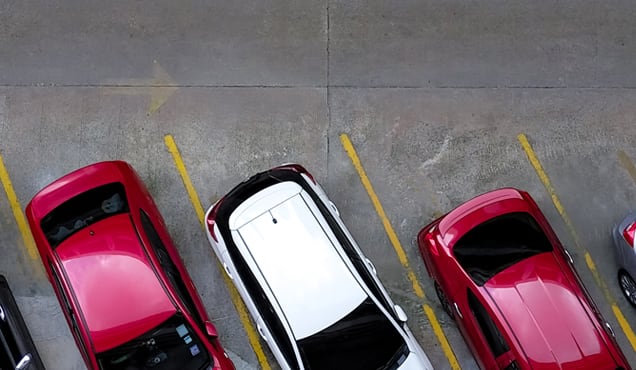[ad_1]

Japan/Korea sales
May 2022: -18.2%; 0.38 million units vs. 0.46 million
units
YTD 2022: -15.2%; 2.37 million units vs. 2.79 million
units
- Japanese light vehicle sales decreased 23% year on year (y/y)
in May 2022. For major OEMs, product supply disruption continued in
response to shortages of semiconductors and other components,
including some electronic devices. This could drive the market down
in the short term, in addition to the fact that market recovery
might also be delayed because of the ongoing political and economic
uncertainties arising from the geopolitical tension of the
Russia-Ukraine crisis. - Most of the domestic OEMs in Japan posted a year-on-year
decrease in sales, except for Mitsubishi in May. Sales at Toyota
(including the Lexus brand) decreased 21.2% y/y. Sales at Honda
were down 20.7% y/y and sales at Nissan decreased 9.7% y/y. - Despite the recovery from the COVID-19 crisis in 2020,
component and semiconductor shortages caused inadequate production
and hindered growth in 2021. This will likely continue for at least
the first half of 2022, and the additional geopolitical crisis
between Russia and Ukraine will put further downward pressure on
the automotive market with a deteriorating economic environment.
The Japanese market’s overall domestic sales in 2021 finished at
4.36 million units, down 3.3% from the year earlier. Domestic sales
will be nearly flat in 2022 at 4.36 million units at the most, with
some recovery momentum expected toward the latter half of the year,
although it is unlikely to fully compensate for the drops seen in
2021. - South Korea’s total light vehicle sales declined 7.8% in May
2022, mainly because of the global semiconductor shortage and the
prolonged COVID-19 pandemic, which continued to weigh down vehicle
production and sales. - South Korea’s post-consumption tax relief ended in 2020, but
the government extended it until June 2021 to tentatively boost
vehicle sales, and then extended it further until the end of 2021.
This again would last until June 2022, which has been extended
again to the end of 2022. However, the prolonged effects of the
special consumption tax reduction are waning and becoming less
influential on sales and development sustainability in the short
term, as well as the growing negative impact from production
activity and component shortages. - Meanwhile, component shortages and declining production
activity continued to have a negative impact. South Korea’s sales
of new vehicles in 2021 declined 8.6% from the year earlier, to
1.70 million units. Sales in 2022 will likely decrease further by
7.6% compared with 2021, to 1.58 million units.
Japan/Korea production
May 2022: +1.1%; 0.73 million units vs 0.72 million
units
YTD 2022: -10.1%; 4.29 million units vs 4.78 million
units
- In Japan, May 2022 output again dropped 8.8% year on year
(y/y). In addition to the ongoing semiconductor shortages, several
strict lockdown measures in major Chinese cities such as Shanghai
due to the expansion of the COVID-19 Omicron variant have caused
further operation cuts at Japanese plants due to parts shortages
from China since late March. In June, some OEMs such as Toyota,
Daihatsu, Subaru, Suzuki, and Nissan still have to halt their
operations in Japan because of logistic disruptions, although plant
operations in Shanghai have been gradually resumed. In May 2021,
semiconductor shortages had already damaged domestic output.
Therefore, May 2022 results were lower, at the same level as April
2022 results. The recovery phase gradually will likely begin from
July, whereas risks of supply constraints including semiconductors
can still be seen in the remainder of 2022. Many OEMs surprisingly
achieved year-on-year increases in May 2022 because of lower
results in May 2021 due to semiconductor shortages. Suzuki grew
0.7%, Subaru rose 26.1%, Mitsubishi swelled 30.7%, Honda
strengthened 61.6%, and Nissan increased 89.4% y/y. However, all
the five OEMs’ results were lower than May 2019 production actuals.
Meanwhile, Toyota including Daihatsu declined 26.5%, and Mazda
decreased 32.7% y/y. These two OEMs may have been drastically
affected by component shortages largely from mainland China in May
2022. Toyota even added more downtime in recent weeks. - Full-year 2022 production should modestly recover 2.9% y/y, to
7.67 million units, down by 59,000 units, or 0.8%, since last
month. Because of the component shortage issues amid the Chinese
zero-COVID policy, Japanese vehicle production has been hurt, again
down by 19% (190,000 units) from the last forecast in the second
quarter of 2022, including downgrades for April 2022 results
(41,000 units). OEMs plan to execute recovery production starting
third quarter 2022. However, we are monitoring the latest condition
very carefully amid uncertain market conditions, such as the
ongoing Russia-Ukraine crisis, inflation pressures, a falling local
currency, semiconductor shortages, and China’s zero-COVID
policy. - South Korean light vehicle production increased 19.9% y/y to
0.30 million units in May 2022. Most automakers grew owing to the
base effect from the plant shutdowns amid semiconductor shortages
and increased production days. Hyundai including Kia was up 19.6%,
GM Korea was up 23.4%, and Renault Samsung rose 58.7%. On the other
hand, SsangYong decreased by 10.4%. - Although year-to-date production continued to decline to 1.44
million units, the rate of the decline narrowed to 2.3% y/y, thanks
to the double-digit growth in May. Full-year 2022 production in
South Korea should increase 2.2% to 3.50 million units from last
year mainly because the operational capacity for semiconductors has
made some progress. Meanwhile, the truckers strike from 8 to 14
June in South Korea was another hit to its production recovery.
Whether the production loss can be compensated throughout the year
will be highly dependent on the chip supply progress.
This article was published by S&P Global Mobility and not by S&P Global Ratings, which is a separately managed division of S&P Global.
[ad_2]
Source link





More Stories
The History of Coventry-Eagle Motorcycles
The History of the Suzuki GT200
A Review of the Suzuki GT500